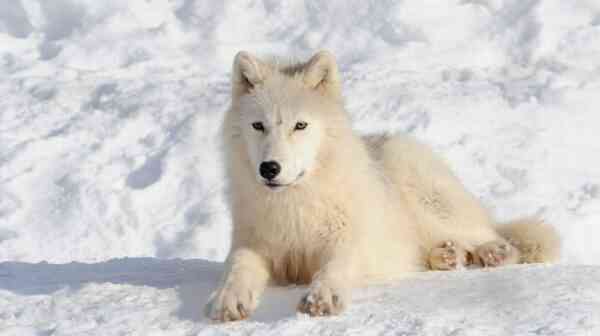Smart and hardy polar wolves, unlike their kindred species, have adapted to living in the most severe conditions North. Despite the relative poverty of the surrounding flora and fauna, they are well able to survive where many other creatures would not be able to cope. Evolutionary processes have made these animals one of the most effective northern predators.
Interesting facts about polar wolves
- They live in truly difficult conditions. Night in the Arctic lasts up to 5 months, and there can be no food for weeks. However, polar wolves cope with this, however, they have to eat everything that they find. Calories are needed to survive.
- Unlike many other animals, polar wolves are practically not pushed out of their natural habitat by humans. The reason for this is simple – people do not need these harsh lands.
- Adult polar wolf can weigh up to 80-85 kilograms.
- These predators live for years at freezing temperatures, and often do not know at all what is heat.
- Most often, polar wolves hunt polar hares and lemmings, but polar deer are the most enviable prey for them.
- A wolf pack sometimes bypasses areas up to 1500-2000 square kilometers in search of food.
- To communicate with each other, polar wolves use a special language of body movements and sounds.
- Like other wolves, polar dwellers howl regularly. In this way, they notify the surroundings of their approach, and enable other packs to avoid an encounter that is likely to lead to conflict and fight.
- In some cases, polar wolves lead a solitary lifestyle.
- In the areas where they live, the temperature, even in April, usually stays below -30 degrees.
- The younger members of the pack usually guard the cubs while the older ones hunt.
- Having driven the prey, the polar wolves eat it whole, with the skin and bones. In these harsh lands, any food is very valuable.
- Adult animal can reach one and a half meters in length, and one meter at the withers.
- When running short distances, polar wolves can reach speeds of up to 55-60 kilometers per hour.
- Only the leader of the pack has its tail up, the rest keep it down.
- Packs of polar wolves sometimes attack the herds of local reindeer herders, causing serious problems.
- Despite such a difficult life, polar wolves live up to 15-17 years. Unless, of course, they die of hunger or the horns of some musk ox that does not want to become dinner.
